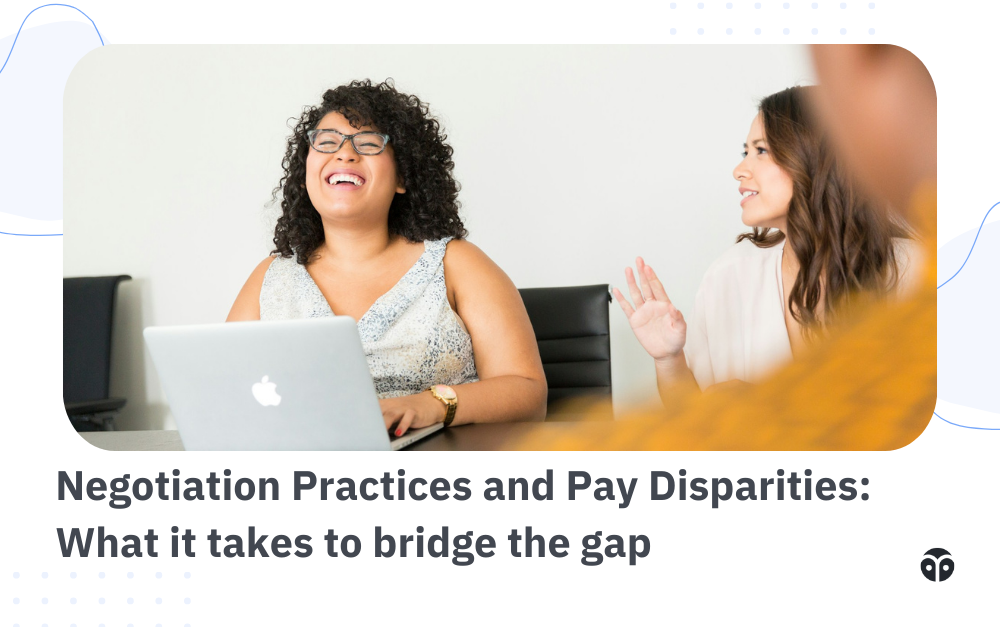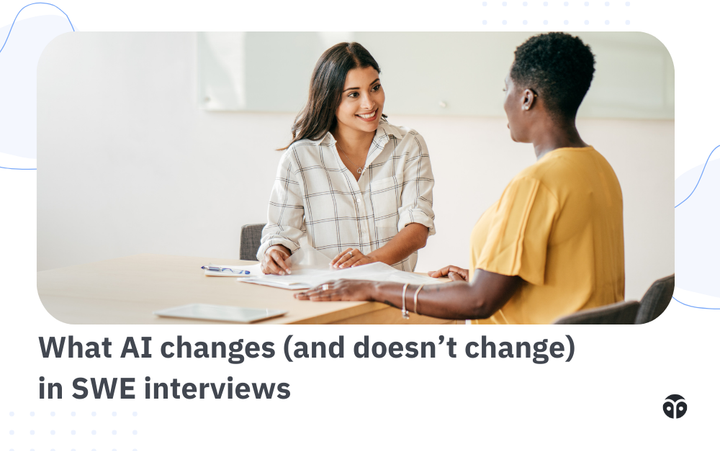Negotiation Practices and Pay Disparities: What it takes to bridge the gap
How current negotiation practices contribute to pay disparities and what companies can do instead.

Across the board, individuals from underrepresented backgrounds earn less than their White and Asian counterparts. Black and Hispanic tech workers earn, on average, around $10,000 to $15,000 less annually compared to White tech workers for similar roles.
While the conversation around equal pay has gained momentum, we’re clearly missing the mark in several areas, including how companies approach compensation negotiation.
Here’s what we’ve learned helping hundreds of underrepresented Fellows through their compensation negotiations, and some ways companies can bridge the gap.
Why negotiation practices matter for pay disparity
Research shows that individuals from underrepresented backgrounds are less likely to negotiate their salaries. Even when they negotiate, they often receive lower counteroffers than their peers.
This trend can be attributed to several factors:
- Lack of information: Many employees, particularly those from underrepresented backgrounds, lack access to information about typical salary ranges and effective negotiation tactics. They often have less access to professional networks that can provide insights into industry standards, salary ranges, and negotiation strategies. This information gap puts them at a disadvantage during salary discussions.
- Confidence gap: In our Fellowship, we’ve noticed that people from underrepresented backgrounds tend to want to settle for offers much sooner than people who generally come from more traditional backgrounds or have been in the tech industry longer. Some struggle with feeling like they belong in tech due to systemic biases and historical exclusion, making them more likely to accept initial offers.
- Bias and discrimination: Implicit biases can affect how employers respond to salary negotiations, leading to lower offers for certain demographic groups.
We’ve seen this play out within our Fellowship in several ways. Here’s an example.
Recently, two individuals, both equally qualified and at the same level, were negotiating their job offers. One was from an underrepresented group in tech and the other was not. We advise our Fellows to give no indication of the pay they’re looking for before receiving an offer so that they don’t inadvertently set a lower salary expectation than they’d otherwise receive. We got to see this first hand when two Fellows, one from an underrepresented group and the other not, received offers from the same FAANG company for the exact same role & level. The Fellow from the underrepresented background, due to a combination of confidence and salary expectations, ended up receiving an offer significantly lower than their counterpart.
The low initial offer is common in negotiations and makes sense from a business perspective. The company fully expected a counteroffer. It was a simple negotiation tactic. But not everyone comes to the table with the same set of negotiation skills. This individual, unsure if they could negotiate for more, was willing to accept the first offer despite it being incredibly low. We were able to walk them through the negotiation process and increase their offer by 30%.
Still, it highlights how a wide range of negotiation outcomes causes people from more underrepresented backgrounds to tend to end up accepting lower offers, which at scale causes pay disparity.
How companies can make effective change
To effectively address pay disparities, companies need to implement strategic changes that go beyond basic pay transparency. Here are some actionable steps that can make a significant impact.
Be transparent about leveling
Making salary bands visible is important but not the only solution. We also need transparency around leveling. This means clearly defining what each level within the organization entails and the criteria for progressing from one level to the next.
The reason that level transparency is so important is that it’s directly correlated not only to current pay but also to the trajectory of compensation throughout someone’s career. For example, Microsoft has many levels—over 10—while companies like Facebook and Google typically have around five, maybe a few more at the very senior levels. As a result, it generally takes longer to progress through the levels at Microsoft, which means that over a five- to ten-year period, you might earn less compared to someone at a company with fewer levels.
By sharing leveling information openly, candidates can better understand their potential career paths and earnings.
Track and measure offer metrics
Even with equivalent qualifications, research shows that job offers to candidates from underrepresented groups are often lower than those extended to White and Asian candidates.
Many companies are already reporting their interviewing and hiring demographic breakdowns in terms of overall percentages, which is great. Take it a level deeper and track offer metrics broken down by demographic. What are underrepresented groups being offered? What are they accepting? How does that compare to average offer metrics?
Tracking these metrics at a granular level (and reporting on them and answering for them) is a powerful way to root out unintentional biases and systematic disparities within organizations.
Implement realistic negotiation practices
It's also important to acknowledge the role of negotiation itself in pay disparities.
Some companies have chose not to negotiate with candidates at all, and a straightforward payscale works well for certain roles. For example, new graduates tend to be relatively level in terms of experience and potential, so it makes sense to limit or eliminate salary negotiations for those positions. This ensures that all new hires start on a level playing field.
But as candidates become more senior, the range of skills and contributions can vary widely. There’s such a wide range of people, experiences, and skills that it can be hard to fit people into buckets that are too narrow. There needs to be some flexibility to account for the wide range of skills and experiences that they bring to the table.
That’s where transparency in negotiation tactics, pay bands, and leveling become incredibly important to combat disparity. Create structure around the reasons to increase compensation, and be transparent about what those situations are. Remove the guesswork for candidates with standardized offer scenarios and make the range of possible outcomes smaller.
Even if you can’t completely eliminate negotiation from your hiring process, you can still take steps to make it more equitable.
Pave the way for a more equitable future
Diverse teams drive innovation. When employees from different backgrounds feel valued and fairly compensated, they are more likely to contribute their best ideas and efforts. It’s time for companies to take bold steps towards true pay equity.
More transparency throughout negotiations is a great first step.



